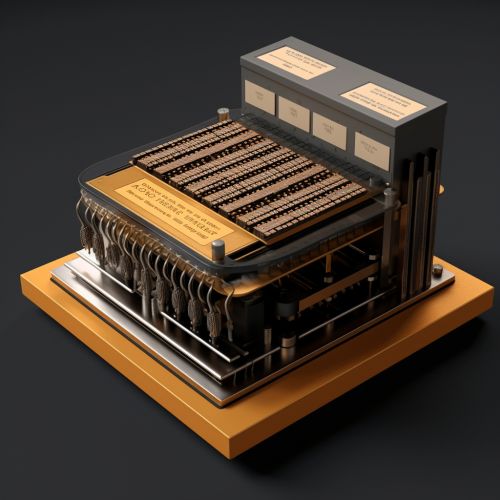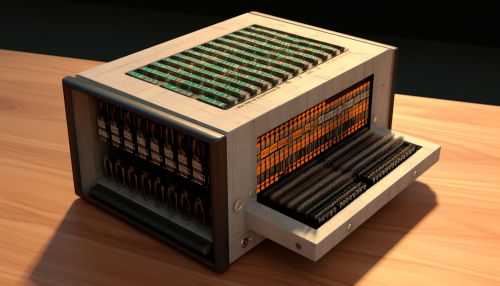Random access machine
Overview
A Random Access Machine (RAM) is a theoretical model of computation used in computer science to study algorithms and computational complexity. It is an abstract machine that provides a more realistic model of a computer's memory system than a Turing machine, particularly for algorithms involving array-based data structures.
Structure
The RAM model consists of a central processing unit (CPU) and a memory unit. The CPU contains a finite number of registers, each capable of holding a single word. The memory unit, on the other hand, is an infinite array of words, each identified by a unique address. The CPU can perform operations on the data stored in the registers and can access the memory unit in a random manner, hence the name "Random Access Machine".


Operations
The operations that a RAM can perform are divided into three categories: arithmetic, control, and memory operations. Arithmetic operations include addition, subtraction, multiplication, and division. Control operations include conditional and unconditional jumps, while memory operations involve loading data from memory into a register and storing data from a register into memory. All these operations are assumed to take a constant amount of time, regardless of the size of the operands.
Variants
There are several variants of the RAM model, each with its own set of rules and assumptions. The most common ones include the deterministic RAM (DRAM), the probabilistic RAM (PRAM), and the concurrent-read, concurrent-write (CRCW) PRAM. The DRAM is the simplest form of RAM, where each instruction is deterministic and takes a constant amount of time. The PRAM, on the other hand, allows for parallel computation, with multiple processors executing instructions simultaneously. The CRCW PRAM is a variant of the PRAM where multiple processors can read from and write to the same memory location at the same time.
Computational Complexity
The RAM model is widely used in the study of computational complexity, a field of computer science that examines the resources required to solve computational problems. In this context, the RAM model provides a more realistic measure of the time complexity of algorithms than the Turing machine, particularly for algorithms that involve manipulating large data structures.
Applications
While the RAM model is primarily a theoretical construct, it has practical applications in the design and analysis of algorithms. It is used as a basis for developing and analyzing algorithms in a variety of fields, including data structures, sorting, searching, and graph theory.
